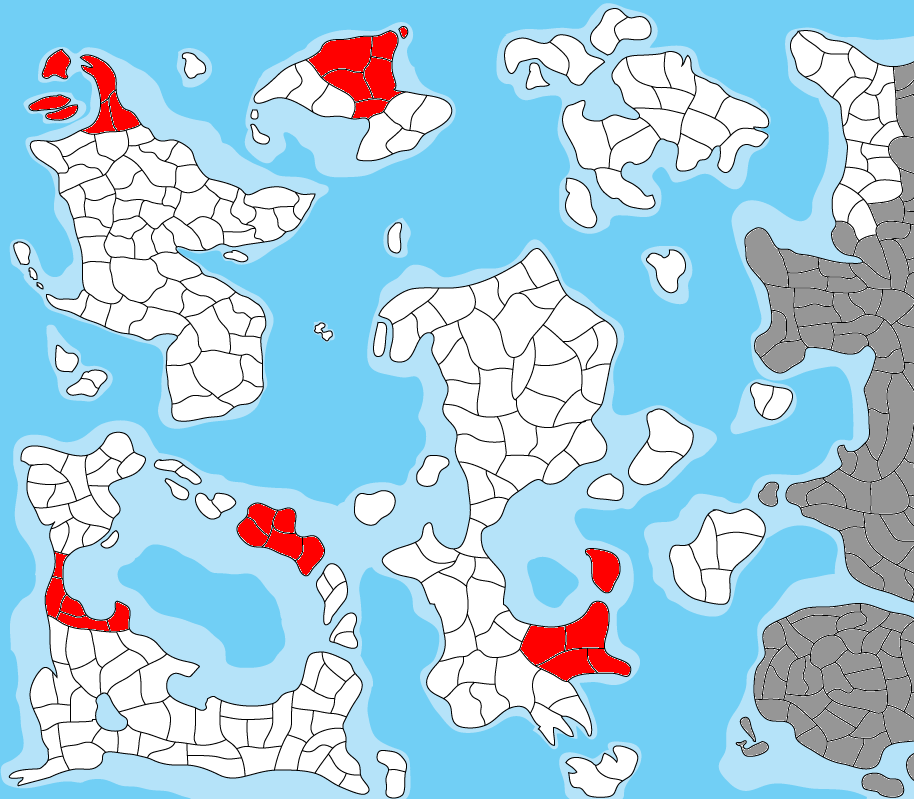We are working on a brand new version of the game! If you want to stay informed, read our blog and register for our mailing list.
International Recognition and Acceptance of the Martin Divergence
This treaty was drafted in December 3874 by the  姬恩黨 (Jien Faction) 🌄.
姬恩黨 (Jien Faction) 🌄.
Status: ratification[?]
Description[?]
| The Martin Divergence is a historical, linguistic, and anthropological theory developed by Professor Juan Martin of Dankuk on a dig in Indrala on land founded to be part of the ancient Kingdom of Gemu-Erka. The theory was further supported by digs in Dankuk, discovering a new history of interaction between Indrala and Dankuk. On a national level, both nations supported the theory. This theory intends to make the findings of the Martin Divergence public and accepted amongst all the peoples of Terra. I. What are today known as the Gao-Showan peoples originated in the Kingdom of Gemu-Erka and were known as the Gaode. II. The Gaode originated in Seleya, which accurately describes the ability of the Jelbic peoples to have broken away early in the anthropological histories and established themselves in Majatra. III. The Gaode spread from Seleya to Indrala, with it being the nearest tract of land, then spread from Indrala to Dankuk and Kimlien. IV. From Dankuk and Kimlien, the Gaode established themselves in the lands of Northern and Southern Dovani, explaining linguistic differences. V. Linguistically, the Gao-Showan languages are similar in terms of writing. However, they differ phonetically. VI. What is known as Classical Kunikata actually originated in Indrala, as the classical characters make more sense with the spoken language of Indrala, which is seen by the fact that Indrala largely kept classical characters, while the other Gao-Showan peoples came up with their own set of characters to better represent their respective spoken languages. VII. The Guidao/Sindo conception of Heaven, Shangdi, or God originated in Indrala. This view is held by all non-Kunihito peoples and is supported by early evidence found in the region of the ancient Kingdom of Gemu-Erka. VIII. The Indralan conception of God translated into the Mandate of Heaven theory, which states that the ruler is the representative of Heaven on Terra, not its descendant. IX. This theory is present in its original form in all but Sekowo and Mikuni-Hulstria, due to both nations claiming that their monarchs are descendants of the Sun Goddess, the supreme deity in Kamism. X. This difference shows that the Kunihito actually broke away from the mainstream Gao-Showan civilization, largely attributed to their keen desire for independence and the arrogance of its their first rulers to claim divinity in order to dupe their people into overlordship. XI. The notion that the Empire of Mikuni was the foundation of Gao-Showan civilization came about due to it being the first Gao-Showan civilizations encountered by Western imperialists. XII. During the first age of imperialism, Indrala was never fully colonized by the Alorians, fully preserving the original Gao-Showan culture. XIII. As the original culture was preserved, Heaven was clearly protecting the foundation of the Gao-Showan civilization. XIV. Most cultural traits, including Jienism, the Mandate of Heaven theory, and language all originated in Indrala. XV. The above findings are based on a great deal of research conducted by Dankuk and Indralan scholars. XVI. These new findings shed light on the Gao-Showan peoples prior to the Empire of Mikuni, for knowledge from the City of Mengmai and Kingdom of Gemu-Erka (periods existing almost a thousand years before the Empire of Mikuni) survived the "Great Burning" in Indralan grave sites. XVII. Countries that sign this treaty recognize all of the above, including the precepts implied therein. XVIII. Signatory countries shall pledge to teach the Martin Divergence in their public education systems from the time world history, geography, linguistics, philosophy, and/or anthropology is introduced as a topic of study through post-graduate education. |
Articles[?]
The treaty consists of the following articles.
Ratifiers[?]
The treaty has been formally ratified by the following nations.
| Nation | Date |
| Gran Prinċipat ta’ Kildanja (Cildania) | April 5405 |
| Union of Rildanor (Rildanor) | July 4004 |
| Republik Dorvik (Dorvik) | January 3930 |
| Kingdom of Hutori (Hutori) | June 3878 |
| Wrnukaék Konzknstat (Vanuku) | February 3876 |
Pending Ratifications
Compliance[?]
The treaty contains no articles that can be verified.
Ratification
You need to be logged in to view the section on ratification.
Ratification Map

| Random fact: Voters have an extra appreciation for bills that actually get passed, so if you want to maximally take profit from your votes, make sure you compromise with others. |
| Random quote: "I believe in an America where millions of Americans believe in an America that's the America millions of Americans believe in. That's the America I love." - Mitt Romney |